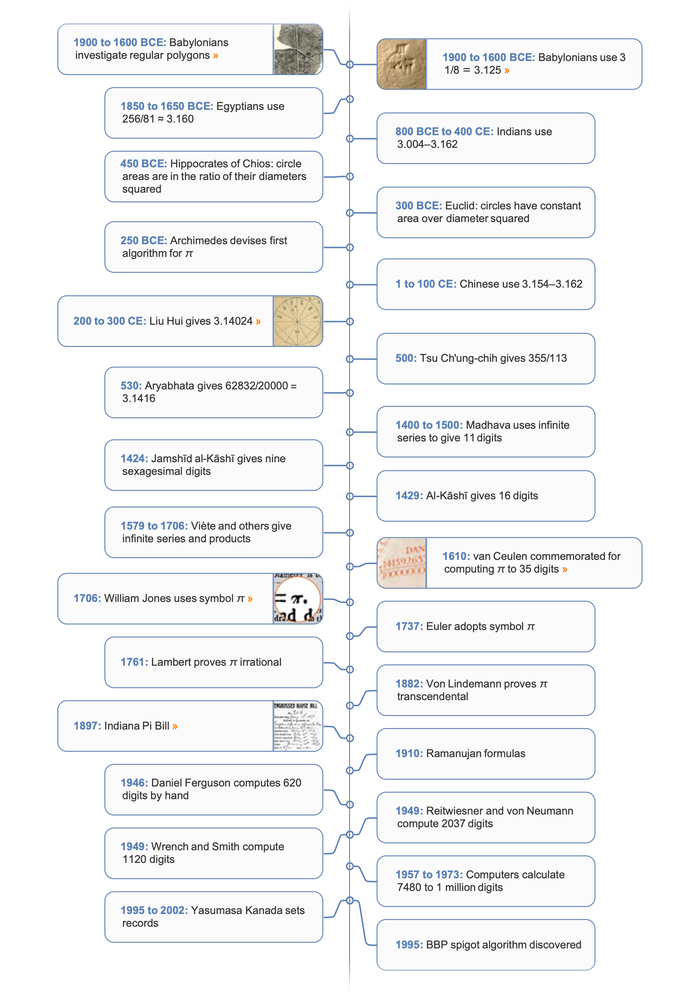Funding for this project generously provided by Overdeck Family Foundation
Pi
The mathematical constant pi (denoted π and approximately equal to 3.14159…) is a real number defined as the ratio of a circle's circumference to its diameter. Since it appears in practical computations such as the area of circular fields and the volume of circular granaries, it has been of practical as well as mathematical interest to the earliest recorded civilizations. Around 250 BCE, Archimedes devised the first rigorous algorithm for computing π, and Chinese and Indian scholars also computed increasingly precise approximations using various methods, including those similar to that of Archimedes. Fascination with computation of increasingly large numbers of digits of π has continued in the modern era, with laborious hand computation being replaced by increasingly sophisticated computer-based algorithms.
-

around 1900–1600 BCE
Babylonian Circle Tablet
Babylonian approximation to π on annotated circle diagram
-

around 1900–1600 BCE
Susa Mathematical Tablets
Babylonian approximation to π based on a regular hexagon
-

attributed to 200–300 CE
Liu Hui's Exhaustion Method
Using recursively inscribed polygons to approximate π
-

around 1610
π Tombstone of Ludolph van Ceulen
Approximations on the memorial of a π calculator
-

1706
Jones's Use of the Symbol π
π gets its symbol
-

1897
Indiana Pi Bill
Thwarting circle-squaring legislation
Timeline
